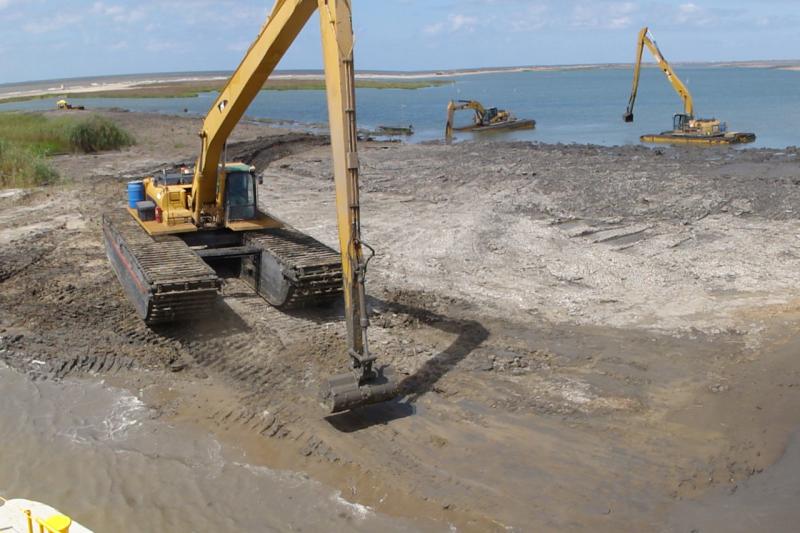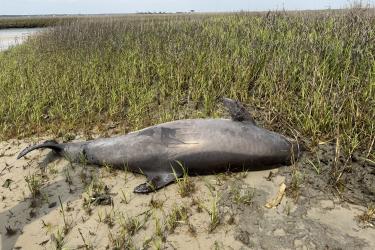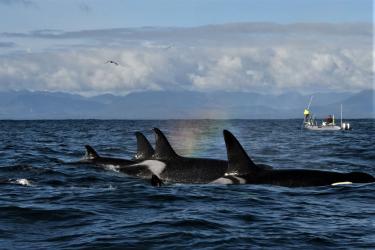The 2010 Deepwater Horizon oil spill in the Gulf of Mexico was the largest offshore oil spill in U.S. history. It resulted in an unprecedented impact to the Gulf’s coastal and marine resources.
Ten years later, NOAA and other federal and Gulf state partners are working to support Gulf restoration. Our work is funded through parts of a 2016 $20.8 billion settlement with BP and other related settlements.
The magnitude of the spill damaged the entire Gulf ecosystem—from phytoplankton to sperm whales, and in coastal and offshore waters from Texas to Florida. Our restoration work is also ecosystem-wide. NOAA works closely with the five states and three other federal agencies, called trustees, in this effort.
NOAA’s Restoration Focus
NOAA supports our partners’ planning and projects across a wide-range of resources and habitats. We retain a strategic focus in three areas most critical to our mission:
- Restoring the Gulf’s coastal habitats and resources.
- Restoring marine mammals, sea turtles, fish, and deep-sea coral habitat.
- Advancing science to either fill data gaps needed to better target restoration or to advance our ability to monitor and evaluate progress toward recovery.
Early Start to Restoration
Before the settlement, while the damage assessment was underway, the trustees reached an agreement with BP for up to $1 billion in restoration projects. Those projects started in 2012, and more than 50 were approved in five phases through 2015.
Some of our NOAA-lead early restoration projects continue today:
- Building protective living shorelines in Florida, Mississippi and Alabama.
- Restoring beach, dune, and marsh habitats at Chenier Ronquille Barrier Island. This project restores a portion of the barrier chain that separates Barataria Basin from the Gulf of Mexico, protecting the coastal ecosystems and communities in the Basin from storms and reducing erosion from shorelines which were heavily impacted by the spill.
- Improving our capacity to respond to stranded sea turtles, and increasing outreach and engagement with shrimp fishing communities to reduce harmful interactions between turtles and trawling gear.
- Working with pelagic fishing communities to voluntarily take a break from fishing for 6 months each year, or using gear to specifically catch yellowfin tuna and swordfish while reducing accidental catch of other fish species.
Restoration Work After the Settlement
After the 2016 settlement, the trustees received the first of 15 annual Natural Resource Damage Assessment payments in April 2017.
NOAA has led or is leading 35 of these projects, with total budgets of $322 million. These projects are restoring fish, sea turtles, marine mammals, Gulf sturgeon, oysters, and deep-sea coral habitat. We’re also restoring wetlands and coastal habitats.
Seventeen of those projects are included in the $226 million NOAA-led Open Ocean Restoration Plan released in December 2019. This plan and its projects represent the largest dedication of oil pollution settlement funds to restore oceanic marine resources in the Gulf of Mexico to date. They include:
- Developing innovative and voluntary tools for commercial fishermen to reduce bycatch of fish, and recreational anglers to help more released fish survive.
- Partnering with commercial fishermen to reduce sea turtle bycatch, and local organizations to protect sea turtle nesting habitat.
- Developing techniques to reduce risks to marine mammals from vessel collisions, ocean noise, and disasters.
- Improving protection of deep-sea coral habitat by better understanding threats, and develop new restoration techniques.
NOAA is also the lead for the engineering and design for the Large-Scale Barataria Marsh Creation project in Louisiana. The project would create approximately 1,200 acres of marsh and is anticipated to be the NOAA’s largest-ever habitat restoration project.
Our Work Through the RESTORE Council
In addition to Natural Resource Damage Assessment funds, the settlement included other funds to benefit a broader spectrum of resources and economic impacts from the spill. NOAA is leading three RESTORE Council-funded projects.
- The GulfCorps program, which established a conservation corps program to benefit local communities and support long-term Gulf coast restoration. To date, more than 300 individuals have been employed through the program.
- The Connecting Coastal Waters initiative, through which we’re partnering with each Gulf State to restore coastal wetlands. A total of six projects are underway in Florida, Alabama, and Texas.
- The Council’s Monitoring and Assessment Program, through which we are supporting science-based decision-making and restoration evaluation.
Looking Ahead
Deepwater Horizon challenged the spill response community and sparked a need for advances in science to help us prepare for future oil spills. In the decade since this tragic event, NOAA has enhanced its science, technology, and communication.
Led by science, we’re ensuring restoration maximizes benefits to the Gulf’s ecosystem. We’re also ensuring restoration provides sustained benefits to natural resources and communities in the Gulf.
It may take decades or longer to get back to how it was before the spill. Along with our federal, state,and other partners, we’re optimistic that the Gulf of Mexico has a bright future





